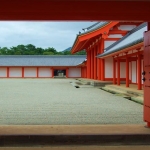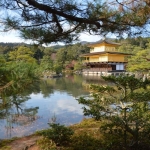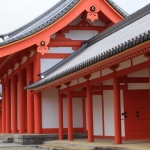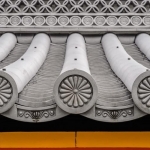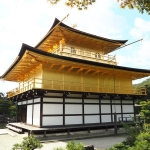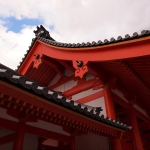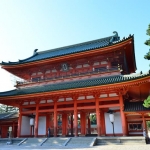Gosho – Kyoto Imperial Palace
Since 794 when Emperor Kanmu moved the capital to Kyoto, Kyoto Imperial Palace had been the residence of the Imperial Family for more than 1,000 years until 1868 when it was moved to Tokyo.
Surrounded by an earthen wall called Tsuiji, Kyoto Imperial Palace is rectangular in shape, with the length of 450m from north to south and 250m from east to west, covering an area of approximately 110,000 square meters. It has six gates, including the main gate Kenreimon.
The Palace burned down several times. Each time it was reconstructed faithfully in the ancient style. The last rebuilding of the Palace was completed in 1855.
The Shishinden, which was used for ceremonies such as enthronement ceremonies, the Seiryoden, the Kogosho, and several other structures are also located here.
To the south of the Shishinden, there is the Dan-tei, an inner south garden covered with white gravel. The garden is surrounded by a white-walled corridor with bright vermilion pillars. Along the corridor, there are three gates including the Jomeimon gate facing onto the Shishinden.
With the exception of two periods a year when the palace can be visited without special permission (around the last week of April and the middle of November), in order to visit the Kyoto Imperial Palace (the Gosho), you must apply to the Kunaicho (Imperial Household Office). The office is inside the Kyoto Imperial Palace Park, the park that surrounds the actual Imperial Palace.
You just have to fill out a form and show your passport. Unlike the other three imperial properties in Kyoto, children below the age of 20 can visit the Gosho if they are in the company of adults over 20 years of age. If you go early to the office, you can often secure permission to visit the Gosho on the day you apply, otherwise, you should be able to visit the following day. Whenever you visit, be sure to arrive at the Gosho about 30 minutes before the start of the tour.
For more information: http://sankan.kunaicho.go.jp/english/index.html


